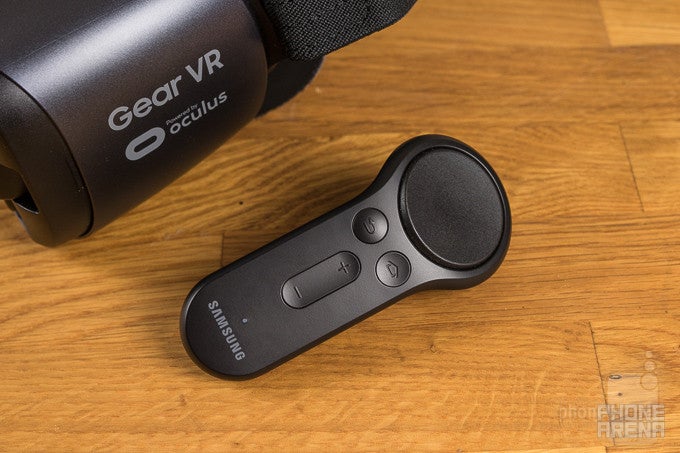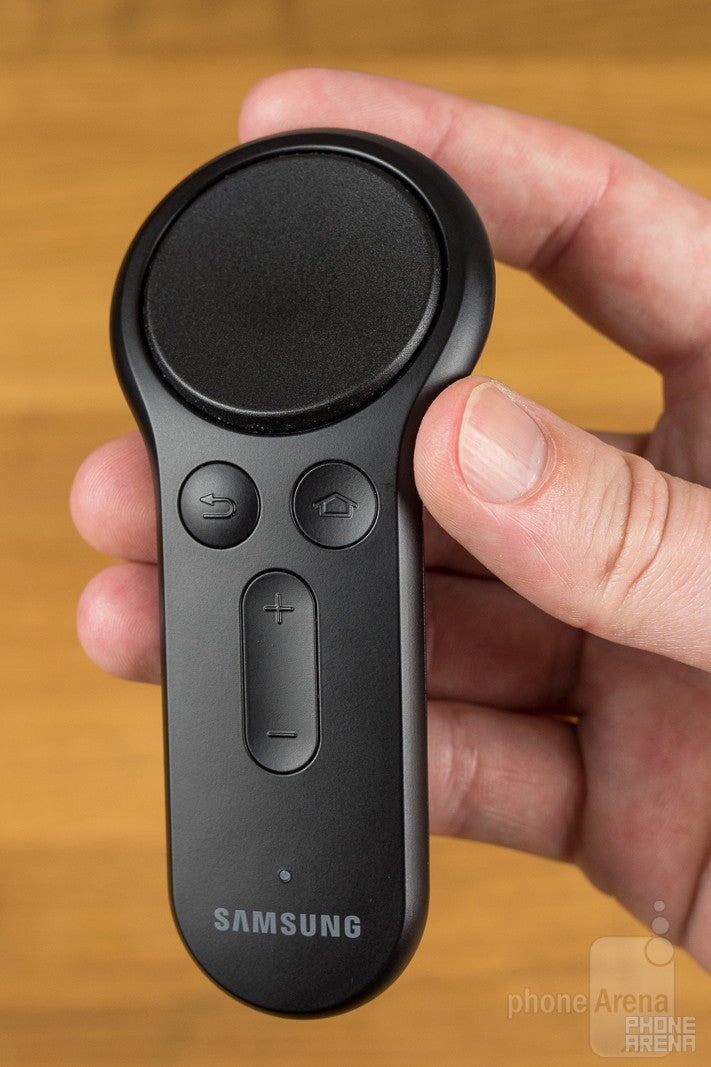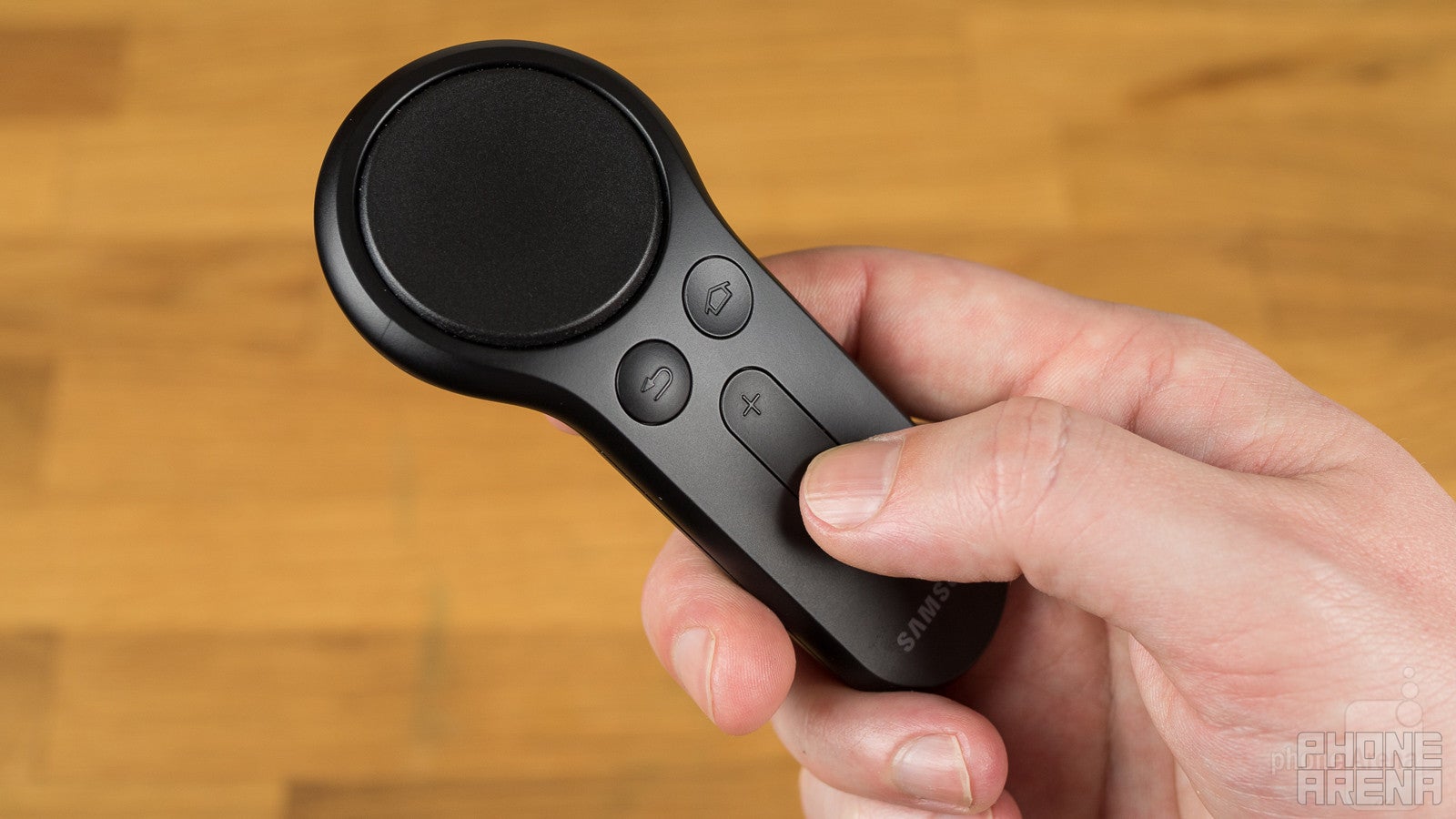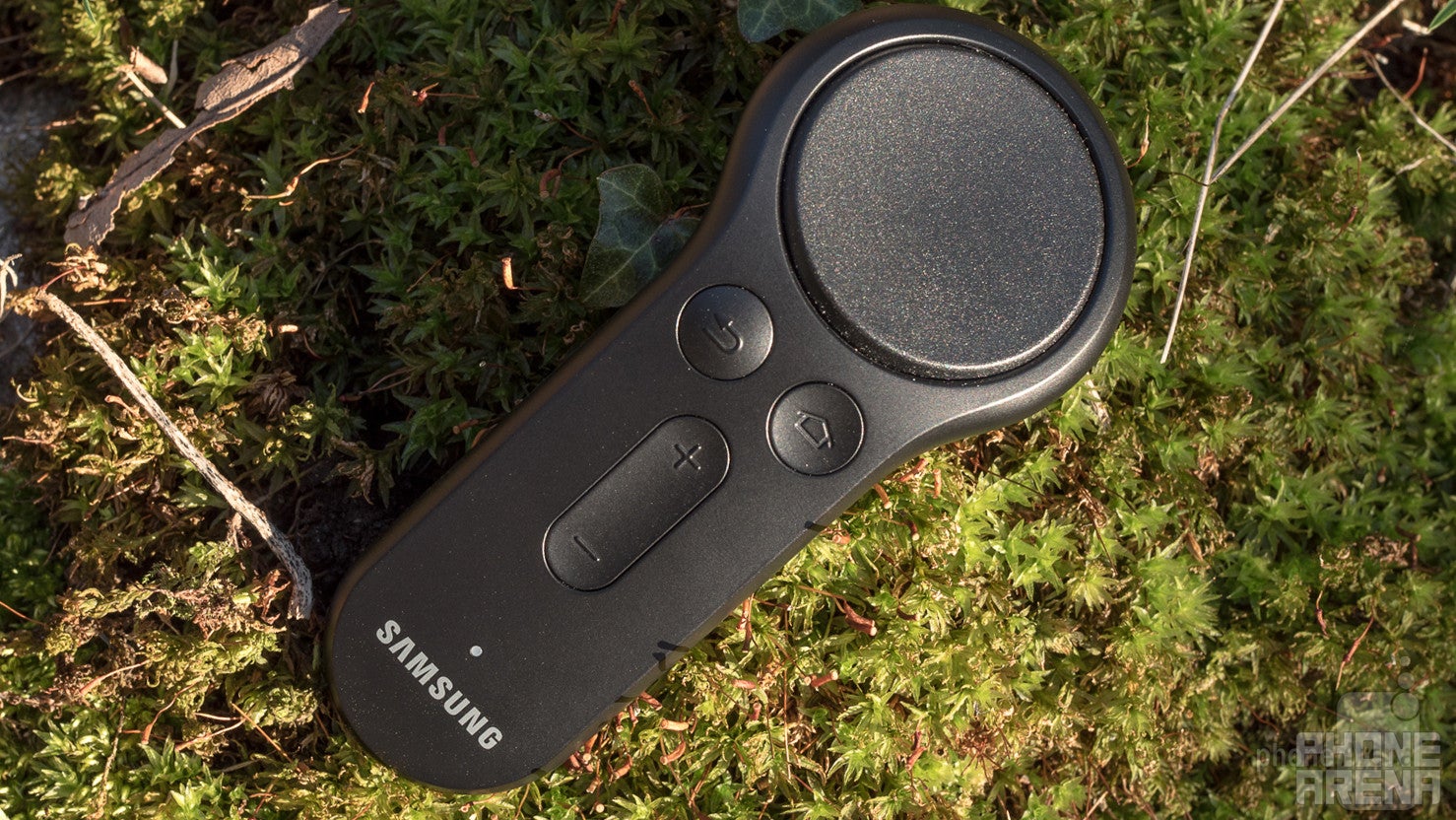Samsung Gear VR with Controller Review

Introduction
Last summer, Samsung introduced an upgrade to the Gear VR headset for its Galaxy smartphones. In contrast to the simple lens-and-frame Google Cardboard-type viewers that were the VR standard with other smartphones, Samsung's platform upped the ante with higher-end headset hardware, incorporating features like adjustable focus, input buttons, and a side-mounted touchpad.
With 2016's new Gear VR, Samsung aimed to keep ahead of the rest of the industry, delivering improvements like a wider field of view for its lenses, revamped, easier to use touchpad, and new USB Type-C hardware support to work with the then-new Galaxy Note 7.

Now in 2017, Samsung's got a new flagship landing, and that means that its mobile hardware is once again in the spotlight – the perfect time to take another swing at a Gear VR upgrade. Instead of going back to the drawing board with its headset design, this new edition is all about catching up with Daydream, and introduces the Gear VR Controller.
Does that one addition manage to substantially improve the Gear VR experience? Does Samsung's new Controller fit in well with its established Gear VR ecosystem, or does this feel more like a case of shamelessly copying Google?
Let's check out Samsung's new Gear VR with Controller.
Headset
We just now employed the very same language Samsung did when announcing this hardware, but despite that talk of a “new Gear VR,” this is very much the same headset we saw launch last summer. As such, we're not going to spend a huge amount of time talking about the viewer itself, having covered it exhaustively back when it was first released.

As a quick reminder, we were generally impressed with the product, and quite appreciated how it offered a much more refined approach to VR than we got with the likes of Google Cardboard. Our chief complaints concerned the limited selection of (oftentimes expensive) apps, some discomfort with the cushioning surrounding the eyepieces, and software performance that was occasionally stuttering and jerky, serving to break the illusion the Gear VR was trying to create of virtually real worlds.
Well, in the months since our initial run-in with the 2016 Gear VR, we've continued to use the headset – even after the Note 7 itself was recalled. Luckily, the hardware easily lets users swap its USB Type-C interface for an old-style micro-USB connector, allowing use with earlier Galaxy phones.
The good news is that we've either gotten a little better at adjusting the Gear VR's fit, its padding has managed to “break in” a bit over time, or maybe we just became more used to the way it feels, because we no longer have any significant issue with the headset's comfort level.
Performance
A new generation of smartphone tends to bring us hardware more adept at number-crunching and graphics-rendering than the devices before it, and that's very much the case with the Galaxy S8. When paired with the Gear VR, we're noticing less in the way of distracting graphical hiccups, and the new 10nm processors seem very well equipped at keeping up with VR-app demands.
But an immersive VR experience is dependent on more than just rendering speed, and in order to properly convey the impression that users are being teleported off to some distant or imaginary locale, you need graphics that are sufficiently high-res. While the new Galaxy S8 phones have some fantastically high-resolution displays, they also offer the physically largest screens we've seen on flagship Galaxy S models to date – and everything else being equal, bigger screens would mean bigger pixels: not a good move for VR.
Luckily, though, those two factors manage to largely cancel each other out, and the new Galaxy S8's pixel density of 572ppi is just about the same as the 5.1-inch Galaxy S7's 577ppi. So while Samsung's not breaking any new ground with an extra-pixel-dense display, graphics still look just as finely detailed as they did last year. Even if you're going with the Galaxy S8+, its 529ppi density isn't too far removed from the S7 edge's 534ppi. And no matter which GS8 model you pick up, you're going to benefit from the smoother graphics possible thanks to the cutting-edge chips powering these phones.
Control

The important part of Samsung's new Gear VR package is the Controller, a handheld wireless unit with index-finger trigger, clicky touchpad, a pair of back and home buttons, and volume rocker.
It's impossible to look at this hardware without drawing comparisons to Google's Daydream controller, so why beat around the bush? Functionally, they're very, very similar, with the only notable difference in terms of input the front trigger button on Samsung's Controller that Daydream lacks.
Samsung's other big departure in building its Controller with a much larger touchpad surface than Google's. On one hand, this helps the Controller feel a little more secure in your hand, as your fingers can rest up against the bulging touchpad area while your thumb interacts with the surface. With Google, whose touchpad is the same diameter as the rest of the Daydream controller, it can sometimes be a little difficult to feel-out the edges of the touch area while immersed in a game – and Samsung's effort is much more no-look friendly.
But on the flip side, that sleek design also lets Google do things like prompt users to turn the Daydream controller sideways, almost Wiimote-style, for a tilting input mode to be used in driving games. The Samsung Controller, meanwhile, feels like it's stuck being a straightforward pointing device.
Like Google, Samsung gives users a shortcut to assist with calibrating the Controller, and pointing the device forward while holding down its home button reorients what the Controller sees as “front.” With Daydream we found ourselves doing this often, as the controller had a bad tendency to drift. So far the Samsung Controller seems to be a little better, but still very much has some calibration issues from time to time. These tend to be less of the “slowly going out of alignment” type than just abruptly, completely losing track of which way is which – thankfully, recalibration is quick and painless. Slightly more frustrating are issues when jumping in and out of the Gear VR altogether, where the system would sometimes lose track of the Controller entirely.
Also drawing comparisons to Daydream, Samsung's implemented an on-headset storage option for its Controller. Rather than taking the Daydream route of stowing the accessory in front of the lenses, Samsung's instead opted for an elastic loops that slides over the headset's existing straps. It's functional, sure enough, but doesn't feel anywhere near as purposefully engineered as Google's.
Finally, we've got to talk about power, and Samsung's decided to go with a pair of removal AAAs. That's not as fancy as Google's rechargeable Daydream controller, but we do suppose it lets you go from dead batteries to fully-powered new ones in just a moment or two.
Software
Samsung's graphical interface for using the wireless Controller is almost shockingly similar to Google's. That is: not only do you see an on-screen virtual representation of where the Controller is in 3D space, but the UI renders a beam of light shining out of the Controller's tip, letting you instantly see where you're pointing it. Mind you, individual games are free to change that up as they see fit, but many that support the Controller offer similar systems, such that you're not just pointing off into space blindly.
Speaking of apps supporting the Controller: there aren't many. Actually, no – saying “not many” would be a serious understatement. There are twenty-five. Total. And of those twenty-five, only seven are free, with most others selling in the $3 to $10 range. At least, those are the officially listed Controller-supporting apps in the Oculus Store. We also found some unlisted apps that very much do advertise and support the new Controller – why they don't show up with the rest, though, we can't say.
If you're just picking up a Gear VR with the Controller, and want to check out a little variety for what you can do with the new accessory, that's not the strongest starting-out point. Granted, Samsung's at a disadvantage compared to Google, as while there's an existing library of Gear VR apps, this Controller is brand new, and it's going to take some time for devs to recognize the demand and start coding their apps for it.
The good news there is that even without being custom-made for the Controller, existing apps can still take advantage of it to an extent. While its “pointing” mode goes to waste, the Controller still offers all the hardware buttons of the Gear VR headset in a slightly-easier-to-reach location, and its touchpad replicates the one mounted on the visor's side.
While that tends to be an upgrade over tapping the side of your headset to navigate around virtual worlds, it's still a little unsatisfying for users expecting a dense selection of apps tailor-made to showcase the capabilities of Samsung's new Controller.
Conclusion

Samsung's making the very smart move of bundling the Controller with the Gear VR going forward; the set will run you just about $130. If you already have the headset, and just want to upgrade to the motion Controller, you can buy the accessory separately for around $40. Or at least, you will be able to soon – sales of the Controller alone have yet to get started.
If you're just getting into Gear VR now, don't think twice about picking up that package deal – you'll be well equipped to enjoy any virtual content coming your way. But if you're thinking about upgrading your existing Gear VR with the new Controller, you might want to hold off just a little.
The wireless Controller is utterly overflowing with potential, but so far it doesn't feel like the Gear VR software library has yet to fully realize it. The situation's almost certainly going to get better, and there's probably going to be a day in the not-too-distant future where we'll be recommending the Gear VR Controller upgrade without hesitation. But we aren't there quite yet, and we can appreciate that someone who goes out and picks up the Controller the moment it becomes available might end up feeling a little disappointed.
For now, keep the faith: Samsung continues to make some of the biggest investments in smartphone-based VR of any manufacturer around, and the experience you enjoy with its Gear VR system only gets better and better as new hardware and software arrives. This latest Controller offers no indication that it will break from that pattern, and we've just got to wait for the apps to catch up with it.













Things that are NOT allowed: